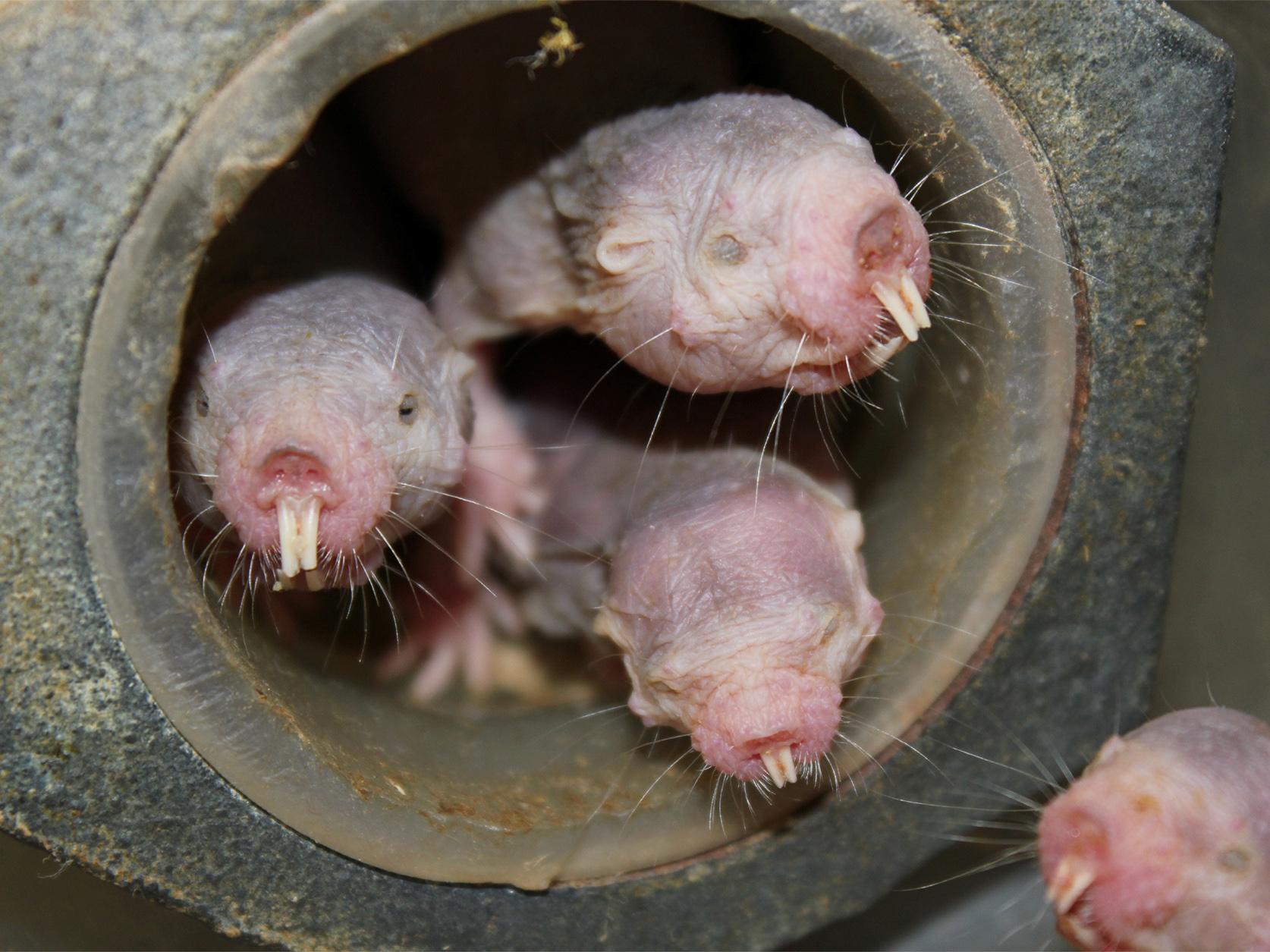Secret of naked mole-rat’s immunity to cancer could help prevent disease in humans, scientists say
Large-toothed and tiny-eyed burrowing rodent has special immune system which can fight off cancer cells, study suggests

Your support helps us to tell the story
From reproductive rights to climate change to Big Tech, The Independent is on the ground when the story is developing. Whether it's investigating the financials of Elon Musk's pro-Trump PAC or producing our latest documentary, 'The A Word', which shines a light on the American women fighting for reproductive rights, we know how important it is to parse out the facts from the messaging.
At such a critical moment in US history, we need reporters on the ground. Your donation allows us to keep sending journalists to speak to both sides of the story.
The Independent is trusted by Americans across the entire political spectrum. And unlike many other quality news outlets, we choose not to lock Americans out of our reporting and analysis with paywalls. We believe quality journalism should be available to everyone, paid for by those who can afford it.
Your support makes all the difference.A surprising new discovery about a hairless and wrinkly subterranean rodent could open the door to ways of preventing cancer in people, scientists have said.
The naked mole-rat, a virtually blind burrowing rodent native to east Africa, has long fascinated researchers due to its range of peculiar powers.
The large-toothed, tiny-eyed and cold-blooded creature is immune to certain types of pain, can survive for 18 minutes without oxygen, and can live for more than 30 years while defying the biological laws of ageing.
The mole-rat is also highly resistant to cancer, a trait which has made it focus of research teams studying the disease across the world.
Previous studies had concluded the animals almost never developed the disease – with only a handful of cases ever observed in the species – because their healthy cells were simply immune from becoming cancer cells.
However, researchers at the University of Cambridge have now shown for the first time that genes known to cause cancer in the cells of other rodents can turn mole-rat cells cancerous.
Instead, the team concluded, what sets the creature apart is a complex system of cells and molecules surrounding a cell, including the immune system.
The researchers believe interactions with this system, known as a microenvironment, stop initial stages of cancer from developing into tumours.
Dr Walid Khaled, a Cambridge pharmacologist and one of the senior authors of the study, said: “The results were a surprise to us and have completely transformed our understanding of cancer resistance in naked mole-rats.
“If we can understand what’s special about these animals’ immune systems and how they protect them from cancer, we may be able to develop interventions to prevent the disease in people”.
In the study, published in the journal Nature, the researchers analysed 79 different cell lines grown from intestine, kidney, pancreas, lung and skin tissue taken from 11 individual mole-rats. They infected cells with modified viruses to introduce genes known to cause cancer in mice and rat cells, but which were not expected to be able to turn mole-rat cells cancerous
“To our surprise, the infected naked mole-rat cells began to multiply and rapidly form colonies in the lab. We knew from this accelerated growth that they had become cancerous,” said Fazal Hadi, a postdoctoral research fellow and lead researcher in the study.
The team then injected these cells into mice, which within weeks formed tumours, a result which the researchers say indicates it is the environment of the mole-rat’s body that prevents cancer from developing.
This finding contradicts previous research, including a 2013 study which concluded mole-rat cells had evolved an inherent trait which stopped them turning cancerous in the first place.
However, the authors of the earlier study hit back at the Cambridge team. In a response published in Nature, the researchers – based mostly at New York’s University of Rochester – argued the new study achieved different results because it exposed the mole-cat cells to “artificially high” levels of cancer-causing genes, overriding the animal’s natural resistance mechanisms.
The Cambridge team said they would continue to investigate the mechanisms by which the mole-rats stop cancer cells from developing into tumours, with the intention of revealing new ways of treating or preventing cancer in humans.
Dr Ewan St John Smith, one of the study’s senior authors, said: “All our work with naked mole-rats, from studying their hypoxia resistance to pain insensitivity and cancer resistance, is aiming to leverage the extreme biology of this species to understand more about how our bodies work normally.”
Join our commenting forum
Join thought-provoking conversations, follow other Independent readers and see their replies
Comments